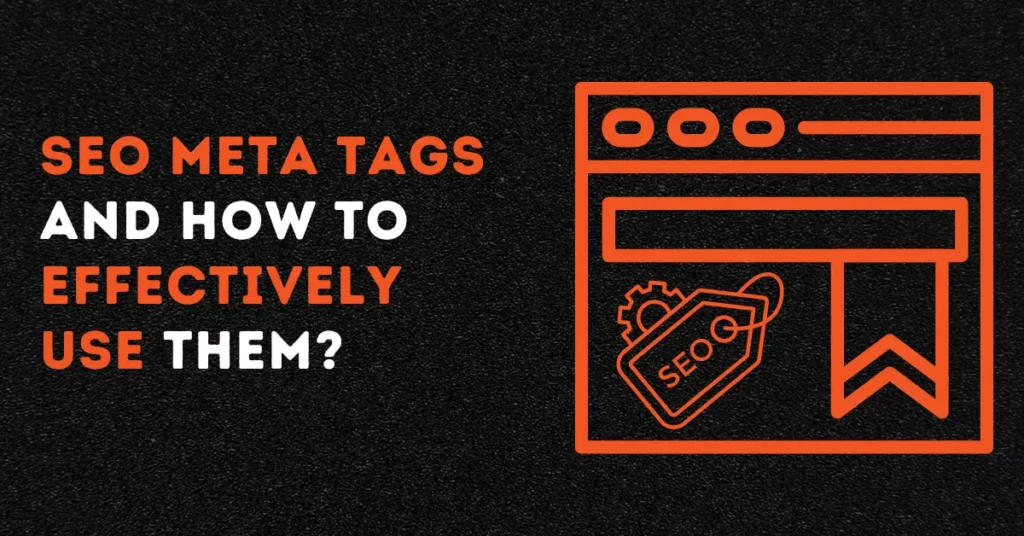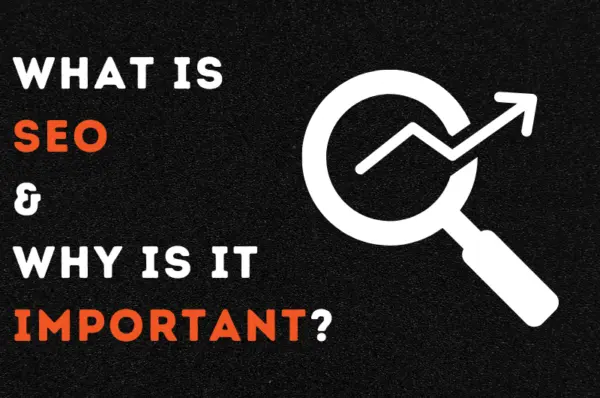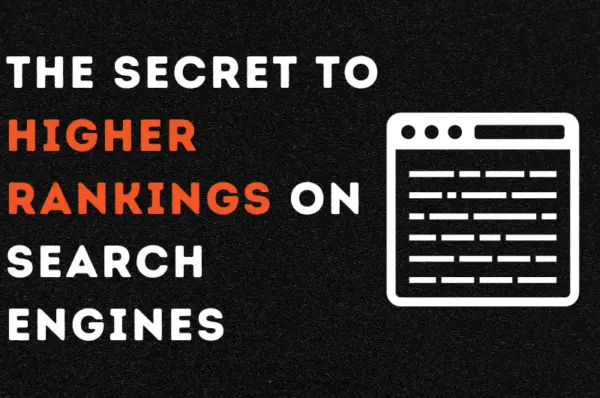Meta Tags are one of the crucial parts of search engine optimisation. SEO Meta Tags are “code snippets that describe the webpage content to search engines, but they are not visible on the page.
The provided SEO Meta tags are mentioned on the HTML page and give comprehensive information about webpage data. These tags tell the search engines how and what to display on search pages for the visitors.
When the SEO Meta tags are used efficiently and appropriately, they can play an effective role in increasing or sustaining the ranking on various search engines
Every website page has multiple SEO Meta tag but they are only visible in HTML code. However, you can view these tags by inspecting the page source.
Here in this guide the importance of SEO Meta Tags, various types of Meta Tags, how to use them, and how to find Meta tags on a website. Let’s get started
What are the types of SEO Meta Tags?
Here are a few of the common SEO Meta tags used with their importance, use, and mistakes. You will also get to know about a few of the Google Meta tags best practices. Let’s have a look
Meta Title:
If you are wondering what is a Meta title. Here is all you need to know:
Title Meta tag, Meta tag title, commonly known as Meta title is a page title that is displayed by various search engines including Google in search engine results. It is one of the important tag SEO Meta tags.
Importance of Meta Title:
Titles are important as they give users an idea about what’s inside the content and whether its relevant to the searched term or not. It is like the primary information of a webpage.
Here are a few of the Meta tags for google best practices for titles:
- Write a brief yet descriptive title
- Try to be unique
- Avoid clickbait but write a click-worthy title for better Meta title SEO
- For better SEO Meta title use Title case
- Avoid vague titles
- Add target keyword in it
- Stay under 60 characters
How to add a Meta Title?
Once you know about Meta Title best practices. Here is how to add it to HTML
Write or paste the code into the <head> section of the webpage. For instance;
<Title> Page title section </Title>
On WordPress, the task can be done by installing the Yoast plugin. So you can see where to add the title tag.
Common mistakes that should be avoided while writing Meta titles:
- They are too long or too short
- Not every page provides Meta Tags
- There are no title tags for pages which are sometimes negatively effective.
- Multiple title tags on the same page. How will you find a Meta title when there is more than one title for the page? The crawler automatically chooses one and it can be the wrong choice
Meta Description Tag:
It offers a short detail of the webpage. The description is usually used in snippets displayed under the title on search engine results.
Importance of Description Tag:
As we said, Meta description is a summary of the content. Therefore, it acts as a pitch line to capture the visitor’s attention and redirect them to the webpage. Meta Descriptions however are not the ranking factor on search engines. If you are wondering how to find a Meta description? You can find it on the HTML page and search engine page results under the blog title.
Here are a few of the best practices for writing Meta descriptions:
- Try to be unique while writing Meta description for every page
- Avid vague or general descriptions
- Use sentence case to write it.
- Come up with something click worthy (not clickbait)
- Try to summarise in the given character limit
- Add a primary keyword and match the query intent
How to add a Meta description?
The Meta description can easily be added by pasting or writing code into the head section. For instance;
<Meta name=” description” content=” Meta Description of content.”>
It can be easily done with the help of Yoast on WordPress. Wix and other CMS have similar functions.
What are common Meta-description mistakes?
The common Meta description mistakes are the same as Meta Title mistakes:
- The length is too long or too small. It gives a vague idea of content and usually search engines cut from the end to fit the device screen width.
- Pages with multiple Meta descriptions can confuse Google and other search engines
- Pages with no Meta description have difficulty ranking
- Duplicate Meta descriptions can also create confusion for search engine crawlers.
Robots Tag:
These tags are pretty crucial as they help search engine crawlers index and crawl web pages. Various robot tags are used. For instance, “nofollow” or “noindex” tags to prevent crawlers from crawling and “index” or “follow” tags to encourage crawling.
Importance of Robots Meta Tags:
Robots Tags commonly known as robots.txt, are very crucial for site presence on search engine pages. Using the wrong robot tag can cause disaster for the webpage. Therefore, understanding the robot tags used effectively is crucial.
Here are a few of the best practices for writing Meta descriptions:
- Only add robots’ txt tags on web pages that you do not want the crawler to index or follow.
- Try not to bock pages with robots.txt
How to add a Robots Tag?
Use can use the relevant code in the <head> of the page. For instance;
<Meta name=”robots” content=”index, nofollow”>
What are common mistakes while adding a Robots Tag?
A few of the common mistakes are:
- Blog non-indexed pages by robots.txt. The search engine is prevented from seeing the noindex tag inside the content and may still index the URL.
- The rogue Meta with no index tags blocks search engines from page indexing and you might not get organic traffic
- The rogue Meta nofollow blocks search engines from crawling the page links and it can impact badly on page discovery and indexing of content
Meta Viewport Tags:
These tags help in controlling the display of the website on mobile devices
Importance of Meta Viewport Tags:
The Meta viewport tags mean the search engine crawlers can know that your website is mobile-friendly. It automatically increases the credibility and worth of the webpage. Therefore, the site has more chances of higher ranking or consistent top positions.
Here are a few of the best practices to be followed
- As Meta Title and Meta description adding a viewport tag on all web pages is important.
- You can use the “standard” tag to add a viewport.
How to add a Meta Viewport tag?
Here is how you can add a Meta Viewport Tag:
<Meta name=”viewport” content=”size, initial-scale=2.0″>*
*Note that it is just a common way to add a viewport tag. Initial scale size can vary.
What are common mistakes while adding a Meta viewport tag and how to resolve them?
- To detect whether a viewport tag is added on every webpage or not you can check by using the Mobile Friendly Test Tool. Once you see the viewport error you can add the tag on relevant pages.
- It is pertinent to note here that the viewport tag is encoded on the main page of the website. Therefore, if it is not there then your entire website is not mobile friendly.
Meta Refresh Redirect Tags:
It informs the browser to redirect the visitor to a different URL after a specific period of time.
Importance of Meta Refresh Redirect Tags:
The tags are important mostly in SE practices when you are not using them. Because it might not be supported by all browsers. And sometimes it can be confusing for the visitors
Therefore the best practices for using refresh redirect page tags are:
- Try not to use them until it is very necessary, and use error 301 or 302 instead
How to add Meta Refresh Redirect Tags:
Although it’s better not to use them. However, if it is most important here is how you can add it to a webpage?
<Meta http-equiv=”refresh” content=”5;url=”https://abcweb.com/”>
What are common mistakes while adding Meta Refresh Redirect Tags?
- Adding Meta Refresh Redirect tags is a bad SEO practice. Therefore, check the internal pages report for refresh redirect tags errors and remove them.
Meta Charset Tags:
It is a set of codes for the webpage that tells search engines how to display the text on the page. The most commonly used Meta tags Google charset are for character encoding for the Latin alphabet or Unicode.
Importance of Meta Charset Tags
The wrong character encoding leads to incorrect word display and it leads to bad user experience. Eventually, people do not resonate with the page and might leave the site quickly.
It might cause more page bouncing which is good for the site. However, it is important to remember that bad characters are not directly linked to page ranking. Still, search engines like Google recommend using UTF-8 and Unicode wherever it is possible.
Here are a few of the best practices for using Meta charset tags:
- Use the relevant charset tag on all web pages
- UTF-8 use is more recommended by Google so try to use it where possible.
- Use the right syntax for the HTML version you are using. Mostly HTM 4 and 5 are used.
- The HTML version can be checked by finding the source code for <!doctype html>, if it’s there then the version is HTML5.
How to add Meta Charset Tags?
Here is how to add Meta Charset Tags to any webpage:
<Meta charset=”UTF-8″> It is the way to add charset Tag o HTML5 version.
What are common mistakes while adding Meta Charset Tags?
- ISO-885-1 or UTF-8 are the most common character encoding. However, Google prefers the latter to the first.
- Check by using the web audit tool and try to switch to UTF-8 wherever possible.
Meta Keyword tags:
Last but not least our guide is the use and impact of Meta keyword tags. It is a common myth that adding Meta keyword tags increases the webpage credibility. However, as Google announced the new Meta tag guidelines in recent years it is not the reality. Therefore, the best meta keywords practices is not to use them. Even Bing and other search engines have considered keyword tags spammy.
Conclusion:
So that’s all about SEO Meta Tags. The list of Meta tags to improve SEO includes various types including Title robots, Charset, description, etc. These tiny little hidden code snippets tell us how Meta search ranks pages, enhances web presence, attracts visitors, and improves visitor experience. The best Meta Tags lead to achieving the SEO objectives of businesses.



